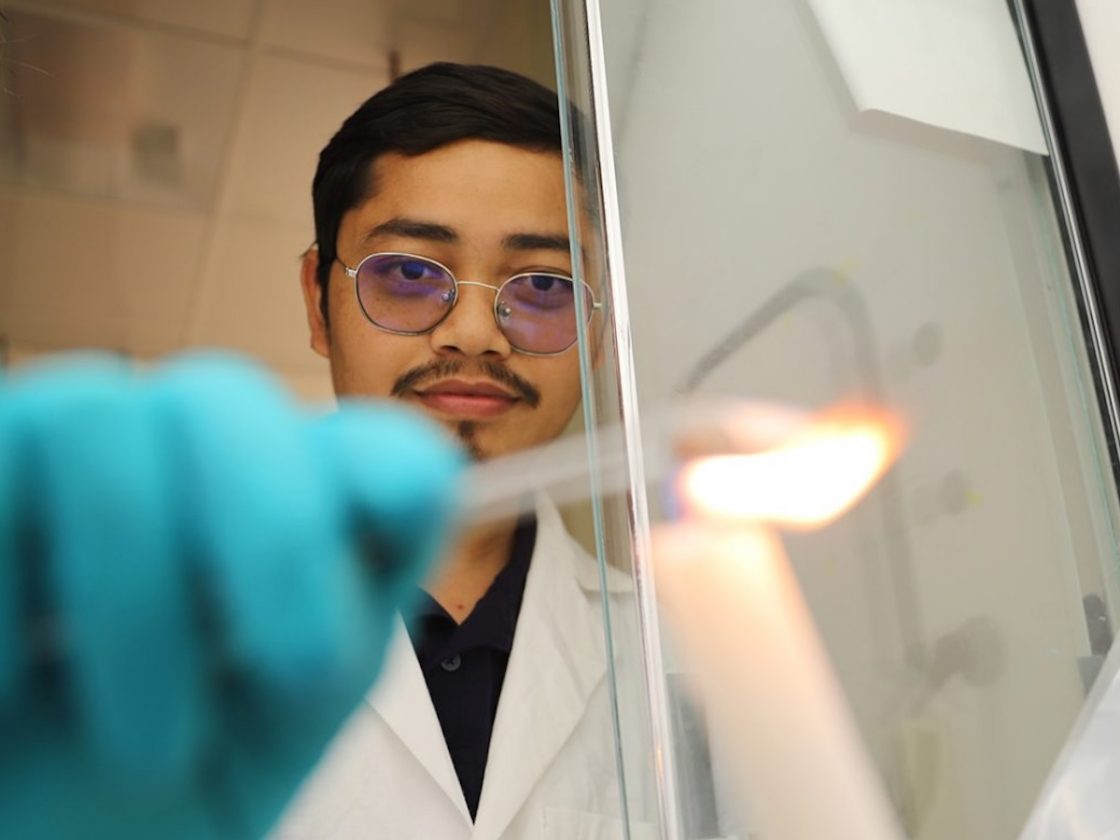Imagine you are standing on a slippery surface and the slightest imbalance makes you stumble. Researchers in the College of Engineering and Computer Science have developed such a surface, not for you, but for water droplets.
The super-slippery coating, called a superhydrophobic surface, makes water roll-off the surface even if it is tilted by just two degrees. Such surfaces can be used for self-cleaning windows, safer medical tools, waterproof clothing, protection of electronics and even to help ships and planes move faster.
Researchers took soot from a wax candle flame and transformed it into a durable coating that makes it practically impossible for water to stick to the surface. This invention doesn’t stop at water. It also repels sticky substances like honey and chocolate syrup and even cleans itself from dirt and dust.
Unlike other artificially developed water-repelling superhydrophobic coatings, which fail under heat and prolonged exposure to water, the design has proven astonishingly robust. It survived high-speed water jets, chemical baths, saltwater, scorching temperatures up to 650°F and even a full month submerged underwater, emerging dry and intact.
“The magic comes from a clever combination of candle soot with oil-infused porous silica structure,” says doctoral student Maheswar Chaudhary, who worked on the project alongside fellow doctoral student Ashok Thapa under the guidance of Mechanical and Aerospace Engineering Professor Shalabh C. Maroo. “The porous structure holds the oil, which in-turn holds the soot particles making the surface superhydrophobic. We have shown this approach to work on both flat and curved surfaces, making it versatile for real-world applications. This isn’t just about repelling water, it’s about creating an easy-to-fabricate coating that truly survives real-world conditions.”
Maroo sees the discovery as a reminder that innovation doesn’t always start with exotic ingredients.
“Even something as ordinary as a wax candle can inspire groundbreaking ideas,” he says. “We’ve turned candle soot into science, blending simple materials with simple nanoscale engineering to open up exciting possibilities for technology and sustainability.”
The research was recently published, with open access, in “Surfaces and Interfaces.”



